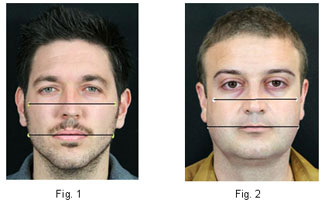Face and brain: two sides of the same reality

The work carried out in this thesis concludes that facial morphology can reveal aspects of human psychology. Phrenology, which postulated a direct link between psychological characteristics and the shape of the skull, was popular throughout the 19th century. However, the practice fell into disuse and eventually became considered a pseudoscience. This research focuses on the same postulation, but uses a modern scientific methodology and offers results which spur scientists on to continue studying connections between psychology, brain and face.
From the failure of phrenology, scientific psychology has found that physical facts cannot inform us about psychological facts. This goes against the public creed that tells us the face is a reflection of our soul, understanding the soul as synonymous of our psyche or behaviour. This thesis analyzes the relationship between the face and the psyche as non-separable aspects from the same reality. It has studied the connections between a determined facial morphology and its psychological functions or behavioural characteristics in two morphological groups: one with the middle area of the face in retraction (figure 2) and another without retraction (figure 1), totalling the sample in 91 subjects.
To achieve the objectives proposed in the thesis, we proceeded to review the theoretical studies that treat the perception of the face as a "Gestalt": this includes several areas and studies, e.g. neuroscience, embryology, disorders and syndromes, lateral brain asymmetry, fluctuation and sex selection, and so studies of twins and bio-typology.
To confirm the assumptions of the thesis we used the anthropometric measurements created by Leslie G.Farkas, as well as photometric measurements’ software. Also we used visual measurements confirmed by several impartial judges.
All these measures were correlated with scientific instruments of psychological evaluation, in particular the 16 PF (Factor Q2 - Self-Reliance: Group adherence / Self-Sufficiency); the AECS – Attitudes and Cognitive Social Strategies (scale Apathy-Withdrawal); the inventory of the personality of the Institut Pédagogique Saint-Georges (scale Misanthrope-Sociable); the Toronto Alexythimia Scale (TAS-20); the Online Alexythimia Questionnaire (OAQ-G2) and the Emotional Expressivity Scale (EES).
The results indicate that there are differences regarding the morphological groups in all the psychological variables or characteristics of conduct studied: the subjects with a facial morphology with the middle area in retraction have shown a greater independence from the group, especially in the 16 PF (Factor Q2), in which they have shown the greatest differences: greater difficulty for the description and verbal expression of emotions (Alexythimia), and a less emotional expressiveness through any channel of communication. The subjects without retraction in the middle area of the face have shown higher values of accession to the group, lack of Alexythimia, and greater emotional expressiveness.
The findings of this investigation represent a first step to attempt to fill the gap that exists in psychological studies. The linkage between brain and psychological phenomena is well studied and established, but on the other hand science has started to discover clear evidence of the link between face and brain, as well as embryological as in the structural level in the developed brain. With this thesis we found and demonstrated for the first time "as we know" the relationship between face and psyche leading to confirm the interactive triad between brain, psychology and morphology of the face.
The correlations found among the forms of the face and the psychological characteristics of the objects of this study suggest an underlying genetic basis, biological and/or physiological which opens a new path that will specifically support more pedagogy, psychiatry and psychology.
References
"Rostro y cerebro: dos caras de una misma realidad". Ph.D thesis defended by Julián Gabarre Mir on july 9, 2010.

